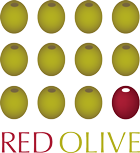Good business-oriented data warehouse design and implementation was one of the main reasons Red Olive was set up, but I feel like we haven’t given it much attention recently so I thought I’d go back to the company’s roots, particularly in the context of the current interest in agile data warehouse development.
My first data warehouse experience: the sloth

Once we had all this data in the warehouse and about 3 months after starting the project we began organising meetings to gather business requirements.
The initial requirements were to come from the neighbouring team who were implementing SAP R/3, the ERP system that’s now called SAP ECC. We wrote detailed user spec’s, functional spec’s and technical spec’s for each report requirement, and we had hand-offs between user and reporting analyst, reporting analyst and area technical analyst, area technical analyst and central data warehouse analyst. There were testing documents at each stage and the process of creating a report took 6-7 weeks. It got much slower once we started sending work off-shore and formalised the process even further. There was no real data available for us to test against until well into the ERP project. It took 9 months to go live with the first 15 reports.
Once it was live the data warehouse ballooned and the cost of the servers to process and store so much data ballooned too. After about 12 months of live running we checked and less than 5% of the data we were storing had been accessed at all in the previous 3 months. We were devastated.
Later experience: the horse

The designer added more detail to the bus matrix and specified where the data came from and how the data transformations would be carried out. A single ETL developer was added to the team and another 4 weeks later the first data for the first few reports was loaded, from a stable source system. Another 4 weeks later and the first few reports had been designed, built and were in testing. After 14 weeks we went live with a small but functioning system on fairly cheap hardware. We were only extracting the data that the business people needed right now. The reports were fairly basic but they were used and liked by the business people and they soon demanded more. The project felt like it was being done on a shoestring, but it was a big success.
Now, blink and you’ll miss it: the cheetah

Like a growing number of others we take the best principles from the agile approach although we’re not agile practitioners per se and we tend to apply “scrum” more than extreme programming. Here are the main things we like about the approach:
- The accountability between the product owner and the scrum master makes for really clear and crisp deliverables.
- The absolute clarity of the list of deliverables in a sprint, which then remains fixed once the work is underway, is a satisfying way for the team to focus and deliver without getting distracted.
- The accumulating, accretive deliverables which deliver business benefit from the start makes sure you maintain business support throughout and keeps the business risk low.
- The sheer speed!
Next time we’ll look at where an agile approach to data warehousing works well and how to get the most business benefit out of it.



